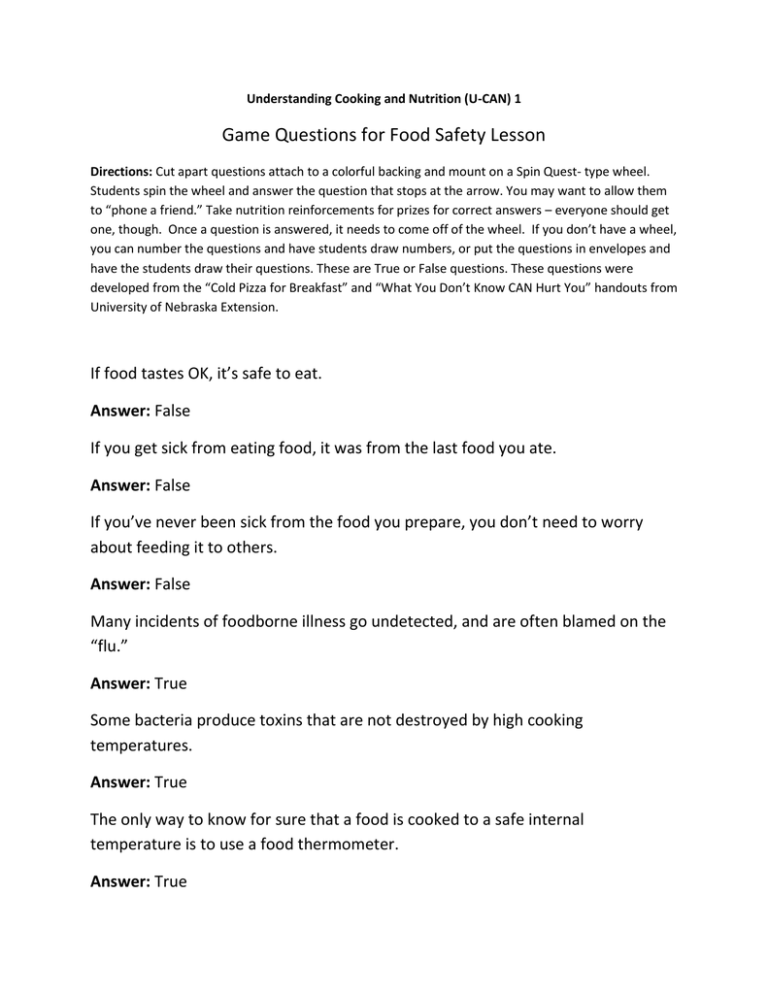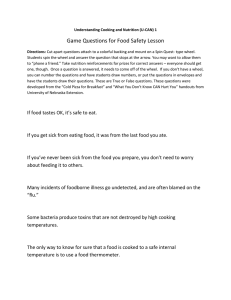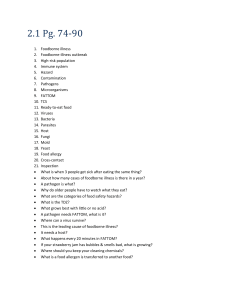Food Safety Game Questions - Answer Key
advertisement

Understanding Cooking and Nutrition (U-CAN) 1 Game Questions for Food Safety Lesson Directions: Cut apart questions attach to a colorful backing and mount on a Spin Quest- type wheel. Students spin the wheel and answer the question that stops at the arrow. You may want to allow them to “phone a friend.” Take nutrition reinforcements for prizes for correct answers – everyone should get one, though. Once a question is answered, it needs to come off of the wheel. If you don’t have a wheel, you can number the questions and have students draw numbers, or put the questions in envelopes and have the students draw their questions. These are True or False questions. These questions were developed from the “Cold Pizza for Breakfast” and “What You Don’t Know CAN Hurt You” handouts from University of Nebraska Extension. If food tastes OK, it’s safe to eat. Answer: False If you get sick from eating food, it was from the last food you ate. Answer: False If you’ve never been sick from the food you prepare, you don’t need to worry about feeding it to others. Answer: False Many incidents of foodborne illness go undetected, and are often blamed on the “flu.” Answer: True Some bacteria produce toxins that are not destroyed by high cooking temperatures. Answer: True The only way to know for sure that a food is cooked to a safe internal temperature is to use a food thermometer. Answer: True Raw meat and poultry should be washed before cooking. Answer: False Over 2 million bacteria can grow from one bacterium left at room temperature in 7 hours. Answer: True Proper hand washing is the most effective way to stop the spread if illness. Answer: True You should use one cutting board for raw meat, poultry and seafood, and a separate one for other foods. Answer: True If you let a food sit out at room temperature for more than two hours, you can make it safe by heating it really hot. Answer: False The worst that can happen to you with a foodborne illness is an upset stomach. Answer: False We should be scared of eating almost everything, because germs are everywhere! Answer: False 2013 Oregon State University. OSU Extension Service cooperating. Stephanie Russell, Faculty/Instructor, Deschutes County. Oregon State University Extension Service offers educational programs, activities, and materials without discrimination based on age, color, disability, gender identity or expression, marital status, national origin, race, religion, sex, sexual orientation, or veteran’s status. Oregon State University Extension Service is an Equal Opportunity Employer.



